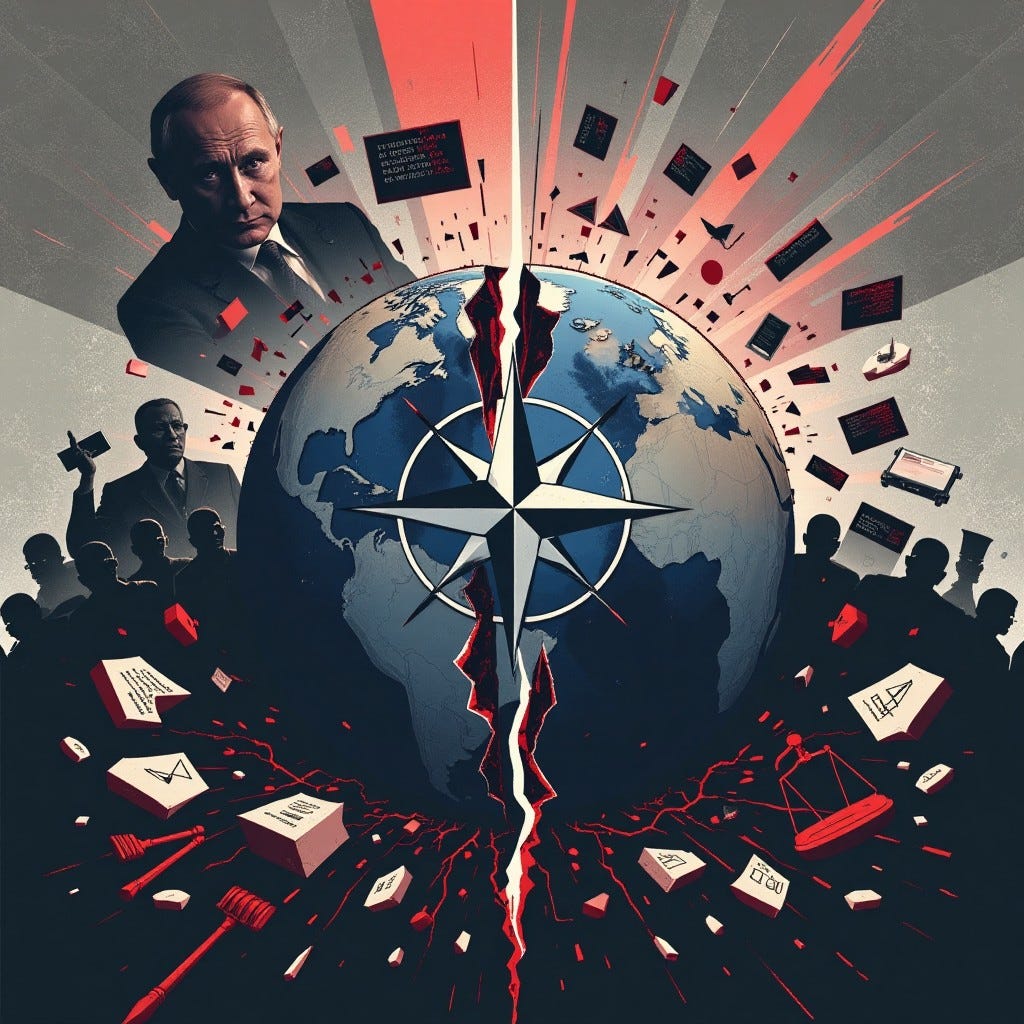Donald Trump's (Krasnov) Second Term: Foreign and Economic Policy Shifts
Strained Alliances, Trade Wars, and a New Global Order
The Fragility of Alliances in Trump's Second Term
Introduction
In the initial weeks of President Donald Trump's second term, several policy decisions have raised concerns about the stability of Western alliances and global economic structures. Notably, Trump's diplomatic posture appears to be more confrontational toward traditional allies while adopting a more conciliatory approach toward Russia. This shift has led to speculation regarding U.S. global strategy and potential external influences shaping its foreign policy.
This pattern of behavior aligns closely with what one might expect if an active measures asset were operating from within the White House, deliberately working to weaken alliances and destabilize global structures in a way that benefits adversarial powers.
Strained NATO Relations
President Trump's interactions with NATO allies have been marked by tension. Notably, his confrontational meeting with Ukrainian President Volodymyr Zelensky and a perceived favorable stance toward Russia have unsettled European partners. These actions have led to apprehensions regarding the U.S.'s commitment to NATO's collective defense principles. Additionally, U.S. intelligence-sharing with Ukraine has been suspended, further raising alarms about America's role in European security.
Escalation of Trade Tensions
The administration has implemented significant tariffs, including a 25% levy on imports from Canada and Mexico, and an increase from 10% to 20% on Chinese goods. These measures have initiated a trade war, prompting retaliatory tariffs from affected nations and contributing to global market instability. Such economic policies appear to isolate the U.S. from key trading partners while avoiding similar economic confrontations with Russia.
A Favorable Approach Toward Russia?
While the U.S. has been aggressive in its dealings with traditional allies, Trump’s administration has taken a markedly different approach toward Russia. Reports indicate that his peace negotiations with Russian President Vladimir Putin have placed demands primarily on Ukraine while imposing little to no conditions on Moscow. Russian state media has openly celebrated this development, with Kremlin-aligned commentators acknowledging Trump’s lack of pressure on Russia in peace talks.
Additionally, Trump’s foreign policy positions have been described by Kremlin spokespersons as aligning with Russian interests, further fueling concerns about potential external influence. Some analysts and former intelligence officials have questioned whether Trump’s stance toward Russia is driven by strategic interests or other undisclosed factors, including potential leverage Moscow may have over him. While no concrete evidence of blackmail has surfaced, speculation persists due to the stark contrast in Trump’s treatment of allies versus adversaries.
Impact on Global Diplomacy
President Trump's recent address to Congress underscored a protectionist agenda, emphasizing tariffs and stringent immigration policies. This approach has heightened partisan divisions domestically and raised concerns internationally about the U.S.'s role in global leadership and cooperation. European allies are now questioning the reliability of U.S. commitments, and there are growing concerns that the erosion of NATO unity could embolden Russia and other adversarial nations.
Conclusion
Collectively, these developments suggest a shift in U.S. foreign and economic policy, with potential implications for the cohesion of Western alliances and the stability of international economic systems. The administration’s approach has raised fundamental questions about the strategic direction of the United States, particularly in its handling of adversarial nations versus traditional allies. Whether this represents a deliberate policy realignment or the result of external pressures remains a pressing concern for geopolitical stability.
If these actions were intentional, they would mirror the playbook of an active measures operation, systematically eroding the West’s unity, isolating the U.S., and empowering adversaries such as Russia and China. This is not just a diplomatic shift—it is a restructuring of global power dynamics with potentially devastating consequences.


